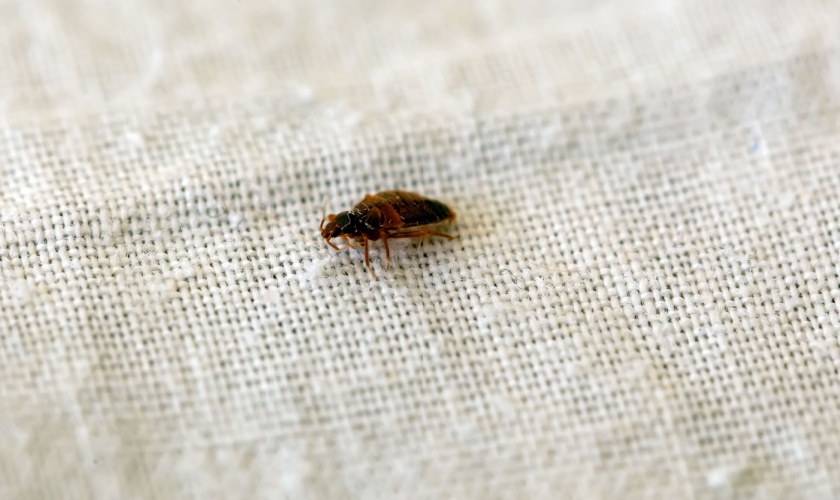Bed bugs are a nuisance no one wants to deal with. These tiny, resilient pests can quickly infest a home, causing discomfort and stress for residents. Identifying a bed bug problem early is essential for effective treatment and preventing the infestation from spreading. Keep reading for the key signs of a bed bug infestation, why bed bugs are challenging to control, and how to address a bed bug problem in your home.
Understanding Bed Bugs
Bed bugs are small, reddish-brown insects that feed on the blood of humans and animals. They are nocturnal, hiding during the day in cracks and crevices, and come out at night to feed. Bed bugs can live in various places around your home, including mattresses, box springs, bed frames, headboards, and even in furniture or behind wallpaper.
These pests are notoriously difficult to manage due to their size, resilience, and ability to hide in tiny spaces. Early detection and professional treatment are critical to eliminating bed bugs before they spread further.
Common Signs of a Bed Bug Infestation
Here are some of the most common indicators that bed bugs may be present in your home:
- Bite Marks on Skin: Bed bugs feed on human blood, often leaving small, red, itchy welts on the skin. These bites are usually in clusters or lines and are commonly found on areas of the body that are exposed while sleeping, such as the arms, legs, neck, and shoulders. It’s important to note that not everyone reacts to bed bug bites, so even if you don’t notice bites, you could still have an infestation.
- Blood Stains on Sheets or Pillowcases: After feeding, bed bugs may leave small blood stains on your bedding. These stains are often small and may appear as rust-colored spots on sheets, pillowcases, or blankets.
- Fecal Spots: Bed bug droppings, also known as fecal spots, are another telltale sign of an infestation. These spots are dark or rusty in color and may be found on mattresses, sheets, bed frames, or nearby walls. Fecal spots may smear if wiped, which can help differentiate them from other stains.
- Shed Exoskeletons: As bed bugs grow, they shed their exoskeletons, leaving behind small, translucent shells. These shed skins are often found near bed bug hiding spots, such as mattress seams, box springs, and cracks in furniture.
- Musty Odor: A strong, musty odor can sometimes indicate a severe bed bug infestation. This smell is caused by the pheromones bed bugs release, which can be noticeable when a large number of bed bugs are present.
- Live Bed Bugs: Spotting live bed bugs is a clear sign of an infestation. These insects are about the size of an apple seed, flat and oval-shaped, and reddish-brown. You might see them along mattress seams, in furniture cracks, or near baseboards. If you see a live bed bug, it’s essential to act quickly to prevent the problem from spreading.
Why Bed Bugs Are Difficult to Control
Bed bugs are challenging to manage for several reasons:
- Small Size and Hiding Ability: Bed bugs are tiny and can hide in cracks as small as the width of a credit card. This makes it difficult to locate all areas where they may be hiding.
- Reproduction Rate: Bed bugs reproduce quickly, laying multiple eggs per day. An untreated infestation can grow rapidly, making it essential to address the problem as soon as possible.
- Resistance to Common Insecticides: Many bed bugs have developed resistance to certain insecticides, meaning that over-the-counter sprays and DIY treatments may not be effective.
- Mobility: Bed bugs can travel between rooms, apartments, or units, meaning that even if one area is treated, the infestation can spread if not entirely eradicated.
Steps to Take if You Suspect Bed Bugs
If you suspect you have a bed bug problem, it’s important to act quickly. Here are some steps to take:
- Confirm the Signs: Look for bite marks, blood stains, fecal spots, shed skins, and live bed bugs. Document any evidence you find, as this will be helpful when consulting with a pest control professional.
- Avoid DIY Treatments: Bed bugs are difficult to eliminate without professional help. Many DIY treatments only address visible bed bugs and don’t reach the hidden parts of an infestation. Professional pest control companies have access to advanced treatments that are more effective.
- Contact Honorable Pest Control for an Inspection: Bed bugs are best handled by trained professionals. Honorable Pest Control offers thorough inspections to confirm the presence of bed bugs, locate hiding spots, and determine the extent of the infestation.
Preventing Future Bed Bug Infestations
Once bed bugs have been eliminated, there are steps you can take to reduce the risk of a future infestation:
- Inspect Luggage and Clothing: Bed bugs are commonly spread through travel. When returning from a trip, inspect your luggage and clothing carefully before bringing them inside.
- Avoid Used Furniture: Bed bugs can hide in used furniture, so it’s best to avoid bringing secondhand mattresses, sofas, or bed frames into your home.
- Regularly Inspect Bedding and Furniture: Routine checks of your bedding and furniture can help you catch any signs of bed bugs early before they spread.
If you’re dealing with a potential bed bug problem, early detection and professional intervention are key to preventing a widespread infestation. Honorable Pest Control offers expert bed bug inspections and treatments designed to eliminate these pests and restore comfort to your home. Contact us today to schedule an inspection and take the first step in addressing your bed bug concerns.
